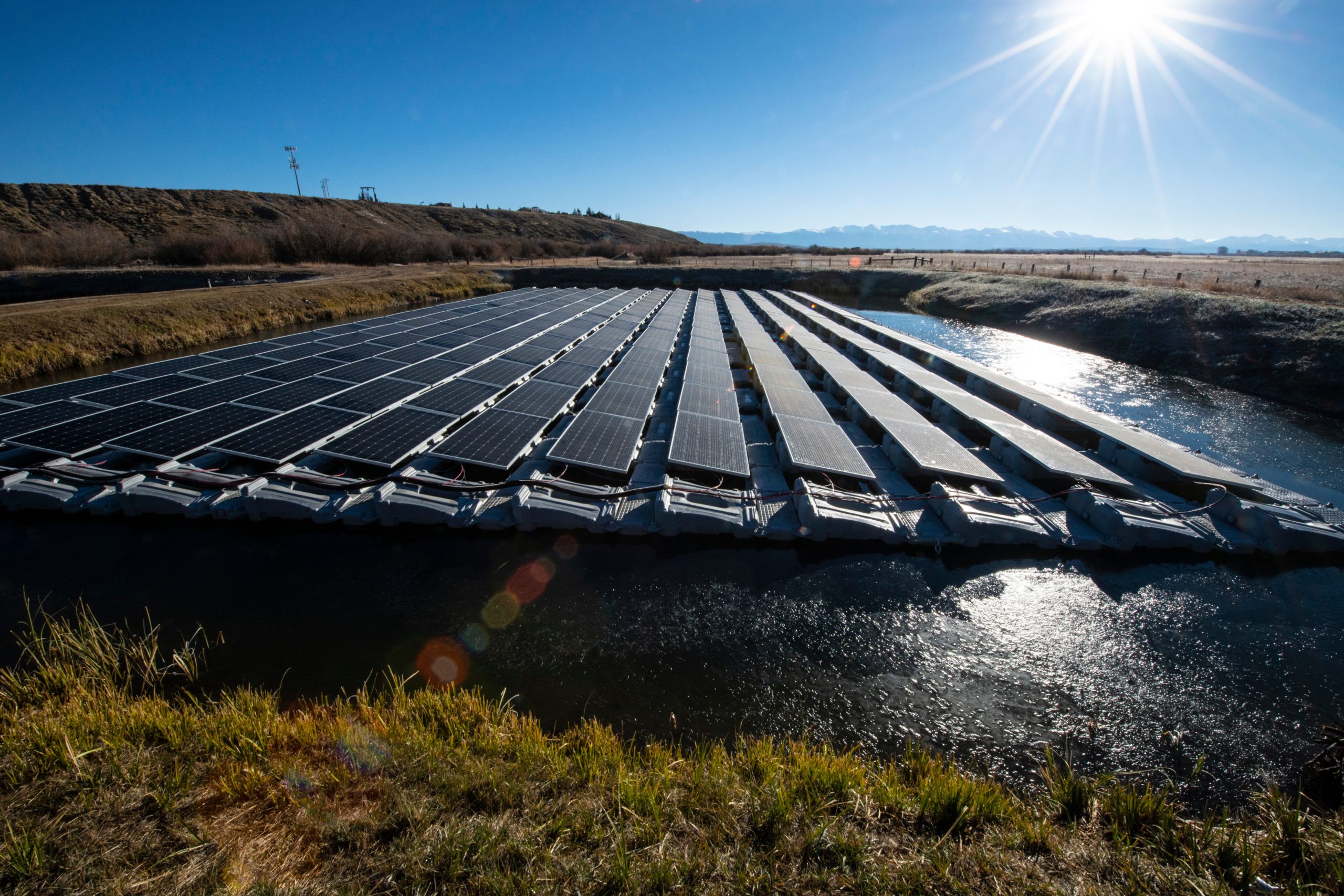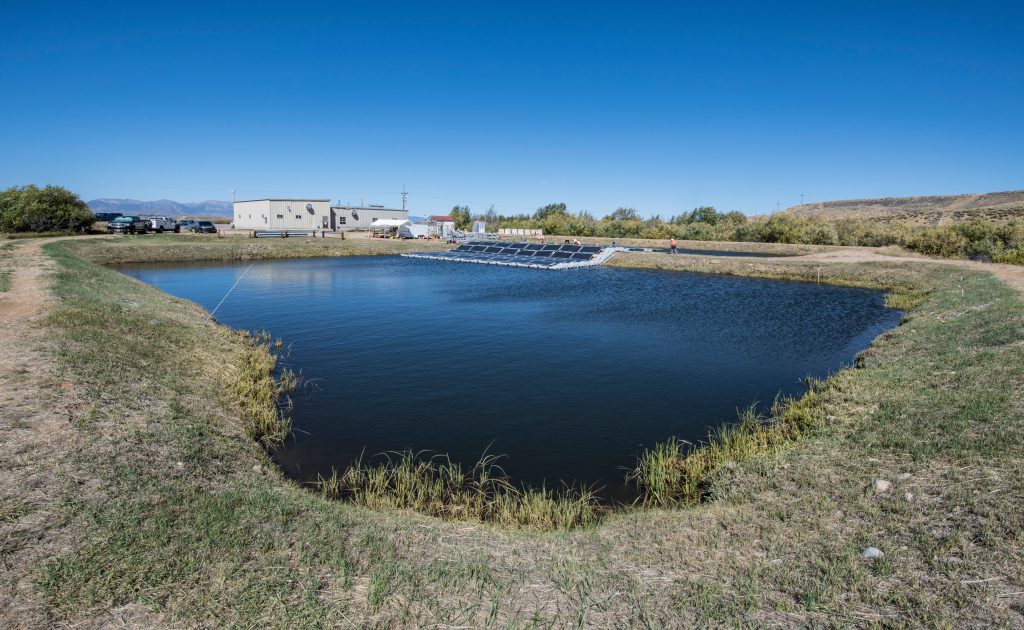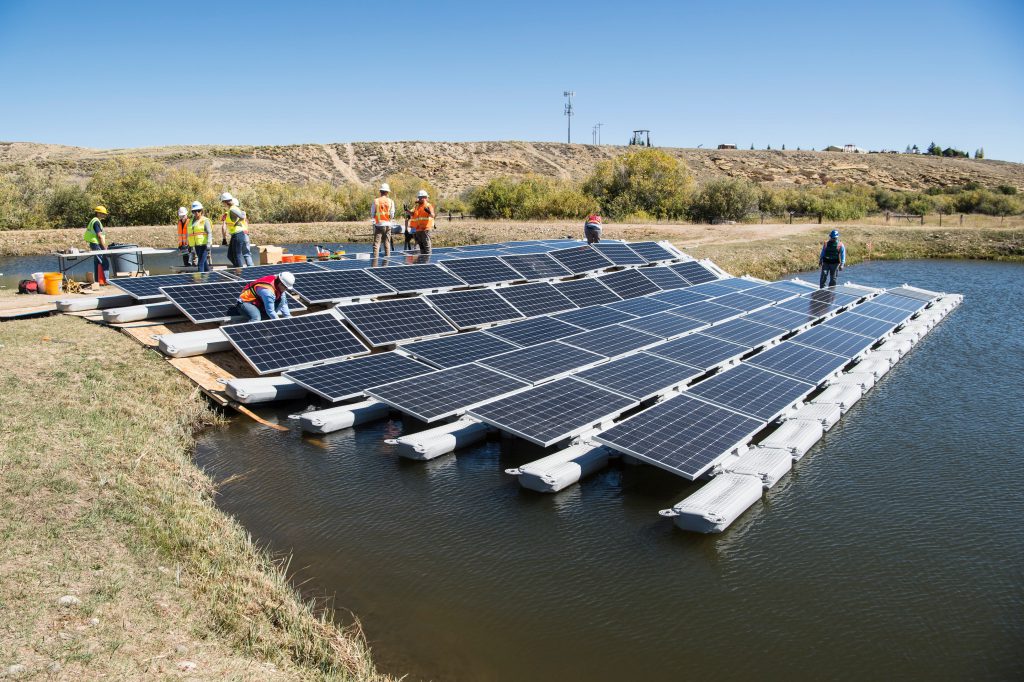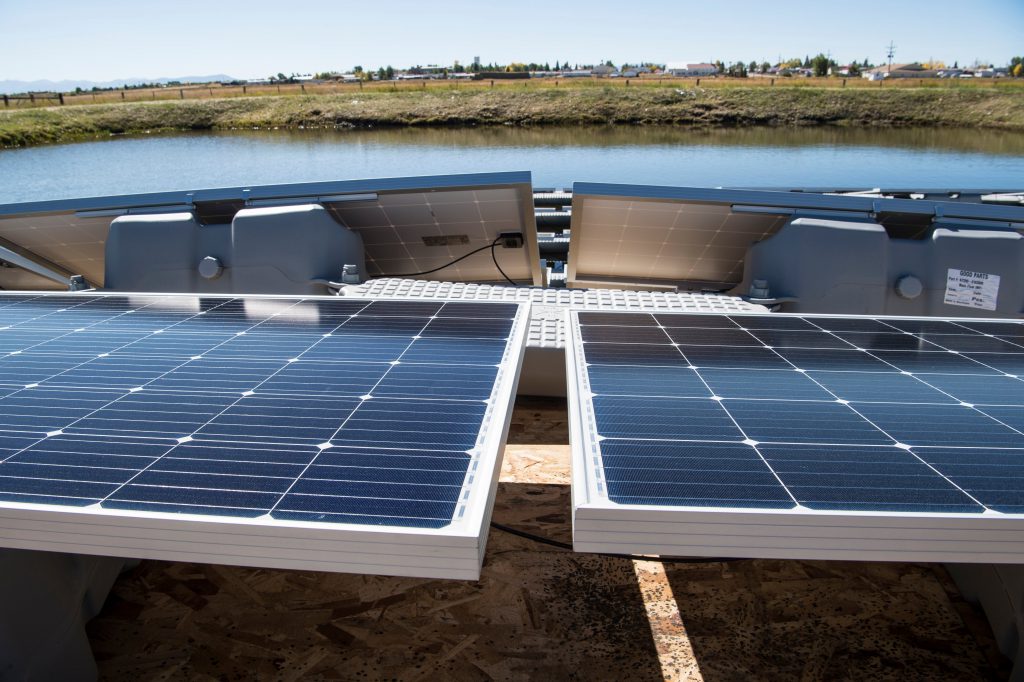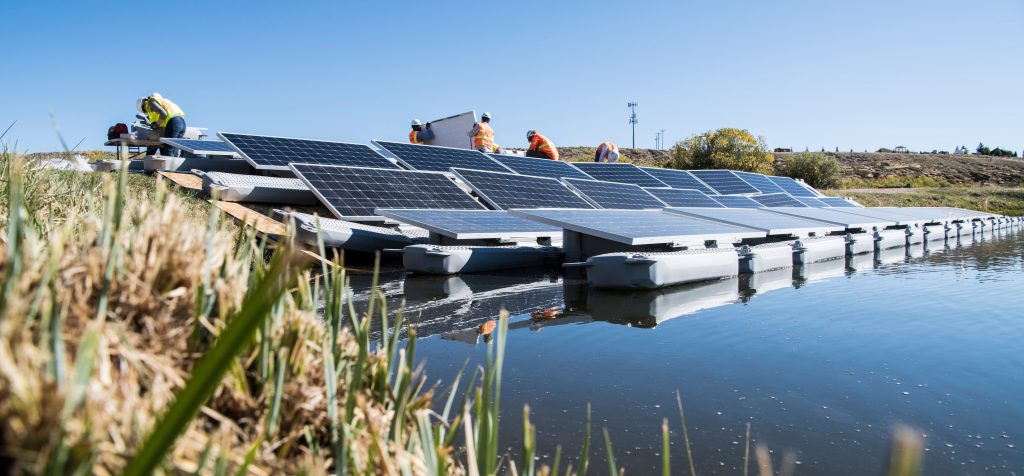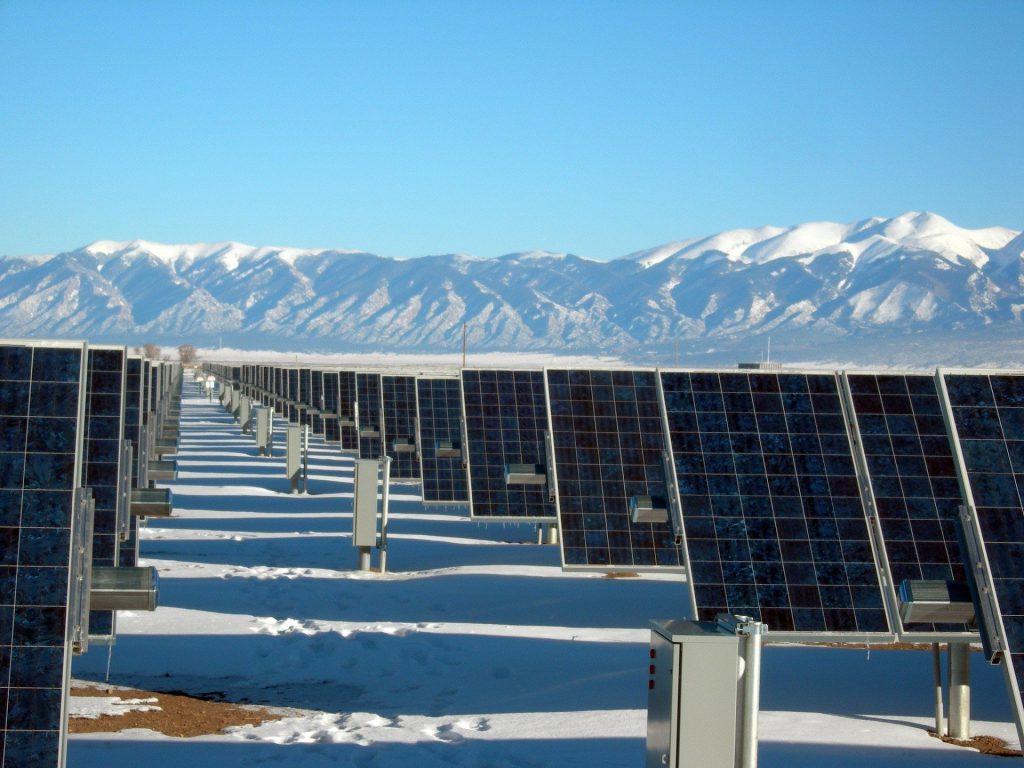First, there were solar panels on rooftops. Then entire farms were dedicated to solar power. Now, solar has reached water. Meet floating solar!
Floating solar farms, otherwise known as floating photovoltaics, or “floatovoltaics,” are harnessing energy where no other power plants have ventured. At its base, floating solar is no different from a solar farm on land–just, well, on a body of water! Of course, with any new method comes unknown risks: how well will the panels fare in the long run? How could they affect wildlife? In its short existence, though, floating solar has created a lot of buzz for turning bodies of water into clean energy producers.
Table of Contents
Why Floating Solar?
Solar farms are making great progress in the way of clean energy access, so why not just keep building them where they’re succeeding: on land? Traditionally, land makes the most logistical sense. But then there’s the counter-question: why limit solar’s potential by landlocking it?
There are several reasons why water might make a better option for a given solar farm. First, securing land for a project isn’t always feasible. In places where land is scarce and needs to be allocated to housing and other infrastructure, floatovoltaics can offer a solution.
Even in regions with ample available land, people don’t always welcome solar development because it might prevent that space from being used for other valuable purposes, like agriculture, buildings, or even just contributing to the natural landscape. Although the vast majority of Americans support more solar farms in general, locals aren’t always keen on the development of a solar farm so close to their home.
Floating solar farms mitigate the “not-in-my-backyard” problem that developers face when seeking land to use for solar projects. In that sense, floatovoltaics are a complement to land solar projects. Floating solar allows solar developers to install more panels and produce more green energy. Using bodies of water leaves more room on land for solar and/or agricultural farms!
Right now, almost all floating solar farms are sited on human-made bodies of water, such as reservoirs, wastewater storage ponds, and agricultural irrigation ponds. While there is potential for floatovoltaic development on natural bodies of water, human-made reservoirs have their advantages. Human-made bodies of water are, well, made by humans, and are more likely to already be managed and have existing infrastructure and roads. This makes the installation and maintenance process easier and more cost-effective.
NREL/Dennis Schroeder
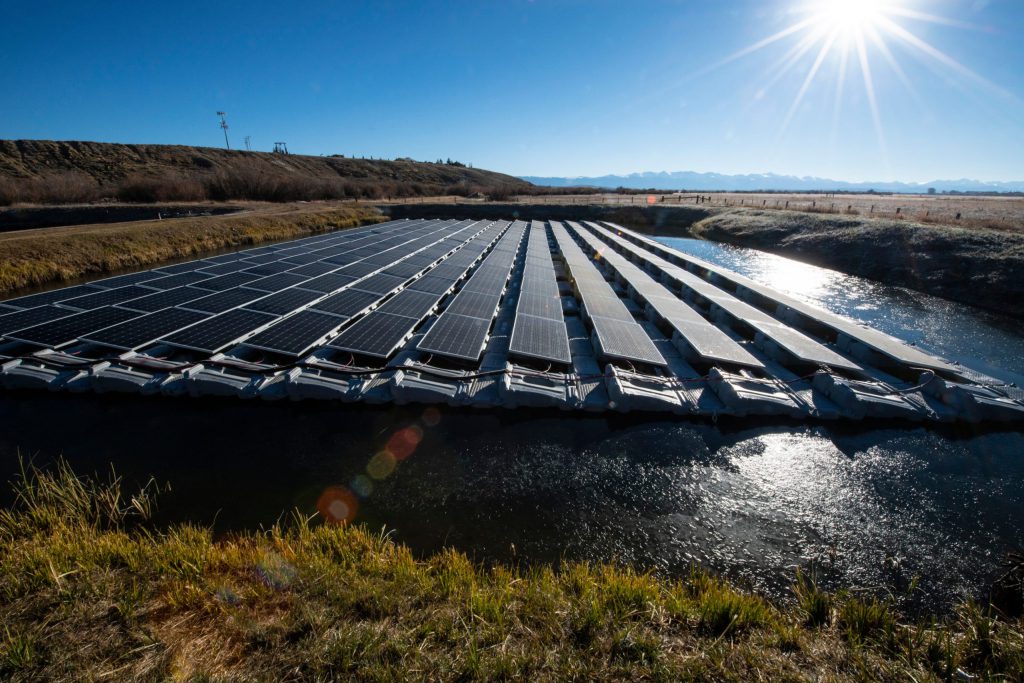
When in Doubt, Float
Renewable energy is on the rise, but solar panels still account for just 1% of the nation’s energy needs. Research shows that floatovoltaics installed on only one-fourth of the nation’s human-made reservoirs would supply 10% of U.S. energy needs. If that isn’t enough to get you onboard, here are three more reasons floating solar rocks:
- Water’s natural cooling effects can boost panels’ power production.
- Solar panels block sunlight and limit air circulation, decreasing the amount of water lost to evaporation and making floatovoltaics useful for water supply in drier climates.
- Floating solar farms can make water safer for people and wildlife by preventing harmful algae blooms.
NREL/Dennis Schroeder
Uncharted Territory
Floating solar has been in use for less than ten years, and there is still so much to learn about this technology. The answers to many questions surrounding floatovoltaics are elusive for the time being, and will only be answered in time as more farms turn on.
For instance, some experts debate whether floating solar can work in climates where local bodies of water freeze. What happens when their floatation devices are coated in ice? To avoid freezing it’s best to put floating solar further from the shore–but this also makes extending transmission lines out there harder, and the longer the transmission, the more energy that might get lost in the process.
People are also right to ask what kind of effects floating solar farms could have on local ecosystems, from the fish that might live in the water to the birds, insects, and other animals that may rely on it for survival. Ethically, it’s better to build on human-made lakes and reservoirs to avoid rich ecosystems. But these bodies are often more likely to dry up than natural lakes and ponds, which could affect floating solar farms’ long-term viability there.
Lastly, the cost of floatovoltaic projects is something of a debate. Some argue floating solar farms are cheaper to install than land arrays, while others claim there are additional costs involved in floatovoltaic installation. Costs will probably fall as the industry matures, as they have for solar farms on land, but it isn’t clear whether they’ll fall low enough to rival traditional solar projects and spur a floating revolution.
We’re still early in the transition to a renewably-powered world here. There isn’t a lack of land available for solar–in fact, we could power all of America by covering just a tiny percentage of its land and rooftops in panels. As early floating projects progress, we’ll learn more about questions from how long the panels will last to how they affect wildlife. Until then, the unknown will pose too great a risk for many developers.
Still, that hasn’t stopped the floating solar farms below:
NREL/Dennis Schroeder
Floatovoltaics Around the World
People around the globe have started to build floatovoltaics. Densely populated cities, where open land is scarce, can especially benefit from floating solar farms. The first floating solar farm, however, was built at a California winery in 2008.
California
Wine Country is a quintessential Californian landscape. People travel from all over the world to experience the attractions of places like Sonoma. It’s understandable that people in the region might be concerned about how changes in the landscape would affect the tourism industry. Placing solar on water could help avoid that issue, as long as that water isn’t prime sightseeing territory.
As a drought-prone state, another incentive for California to go down the floating solar route is the evaporation benefit. By limiting the amount of water lost to evaporation, floatovoltaics allow places like California to improve both their energy and water efficiency. Sonoma’s floating solar project sits atop ponds of recycled water used for irrigation during drought years, and is estimated to power 3,500 homes in the area!
China
Floatovoltaics do more than just keep the landscape green in China. The country has some of the world’s worst air pollution, so to combat rising health concerns, it has become the world’s largest renewable energy investor. In fact, China developed the world’s largest floating solar farm, the Huainan solar farm, on a lake formed on top of a collapsed and flooded coal mine. Talk about turning water into wine! The 160,000 panels produce 40MW of energy.
The Netherlands
The Seekdorn project was completed in just 6 weeks this past fall. It is the largest floating solar project in the Netherlands and the second largest in Europe. This farm alone will power 4,000 households and save about 6,500 tons of CO2 emissions a year. BayWa r.e., the developer, is planning to build more floatovoltaics in the Netherlands this year!
NREL/Dennis Schroeder
Are Floating Solar Farms the Future?
As the cost of clean energy declines, so should the barriers to entry. However, those barriers are specific to geographic regions and personal situations, and so should the solutions. Solar power continues to evolve into a more affordable, accessible, and efficient source of energy, and we need to find new ways to adapt its production to fit the diverse needs of people and the planet.
Realistically, floating solar probably isn’t going to displace large-scale utility generation or the increasing trend of land solar farms anytime soon. But it’s very possible that they could fill an important complementary role, adding capacity where it’s lacking today.
One of the beauties of the solar industry is its ability to innovate. It has pivoted to address its weaknesses and form best practices, such as the creation of floating solar or the introduction of animal agriculture to solar farms, in an effort to make the best use of land for every situation. Whether the issue is rooftop access, scarce land availability, or anything in between, resilience and creative problem-solving skills are transforming the way the world energizes itself.
